LEARN / ARTICLE
CAZ Stories: How Nafas Improved Indoor Air Quality at IShine Kelapa Gading by 78%
CAZ Stories is a series of articles highlighting the significant impact of Clean Air Zones on diagnosing and improving indoor air quality issues for businesses in Indonesia. For more insights, read our previous case studies:
- How Nafas Reduced Indoor Pollution by 70% at AC Ventures Office
- Nafas improved indoor air quality by 89,5% at Mighty Minds Preschool
- How Nafas reduced indoor pollution by 80% at a global shipping company
Air pollution in Jakarta presents a persistent challenge. The recorded average PM2.5 level in DKI Jakarta this year reached 38 µg/m3, significantly exceeding the Indonesian National Ambient Air Quality Standard's annual average limit of 15 µg/m3 – more than double. This figure is also over seven times higher than the World Health Organization's (WHO) annual guideline.
The WHO has identified Particulate Matter 2.5 (PM2.5) as a critical health hazard due to its tiny size and ability to deeply penetrate our lungs. While PM2.5 threatens the entire population, its risks are particularly acute for vulnerable groups, including children under five and adults over sixty.
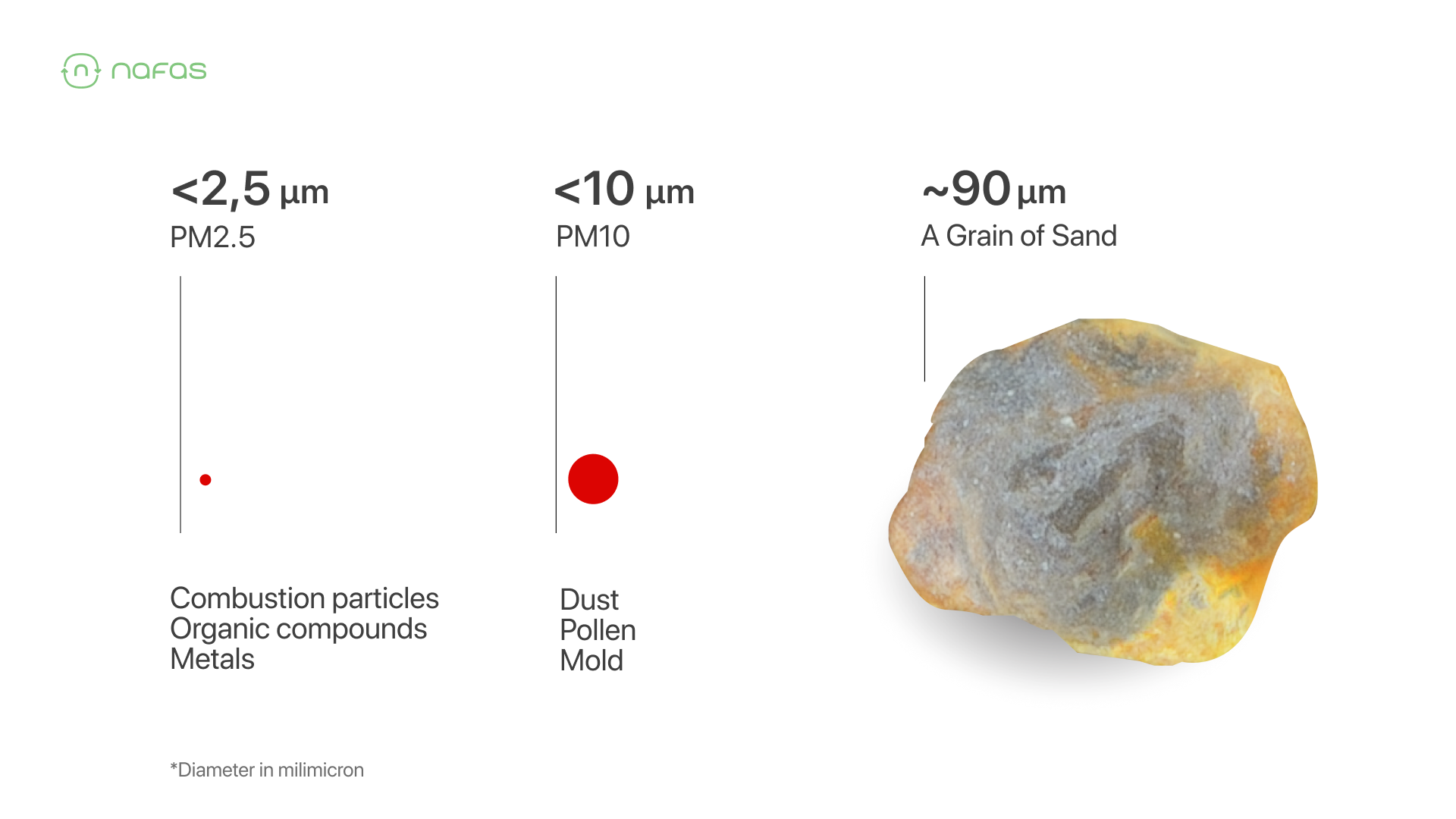
Based on the diagnostic tests run by the Nafas team, it is obvious that the leakage level of PM2.5 pollution from outdoor inside the building is up to 100%. It is very concerning, especially for people who live in the high pollution level like Jakarta.
A recent article by Nafas, “Our Buildings Are Broken”, highlights that PM2.5 pollution is not just an outdoor problem, but also an indoor one. In cities where outdoor pollution is high, there is no significant difference between the air quality outside and inside. Outdoor pollutants can compromise the air quality within various indoor environments. This is true of our schools as well, where healthy air quality shouldn’t be optional, it should be standard.
PM2.5 pollution impacts our children’s health at school
A study published in the Kosin Medical Journal by researchers from South Korea and Japan investigated the short-term effects of PM2.5 on children. The study found that the risk of asthma attacks in children increased by 9% when the concentration of PM2.5 rose by 10 μg/m³ from a baseline of 15 μg/m³ on the day before an asthma attack (Lee et al., 2018). Addressing this issue is vital for creating healthier school environments, benefiting not only students but also teachers and staff.
In response to these findings, Nafas has partnered with IShine Kelapa Gading, focusing on enhancing indoor air quality across all school branches to ensure a safer environment for students.
The problem: Compromised Air quality Inside IShine Kelapa Gading
To assess the extent of outdoor pollution infiltrating the classrooms at IShine Kelapa Gading, Nafas deployed cloud-connected air quality monitors. These devices were tasked with tracking PM2.5, CO2 levels, temperature, and humidity.
During our diagnostic phase, a striking revelation emerged: the indoor and outdoor air quality closely mirrored each other. Analyzing data from October 2023, we observed that the trends of indoor (illustrated by the blue line) and outdoor (represented by the black line) air quality were nearly identical. Alarmingly, the air quality rarely fall below 12 μg/m³, the threshold for 'Good' air quality.
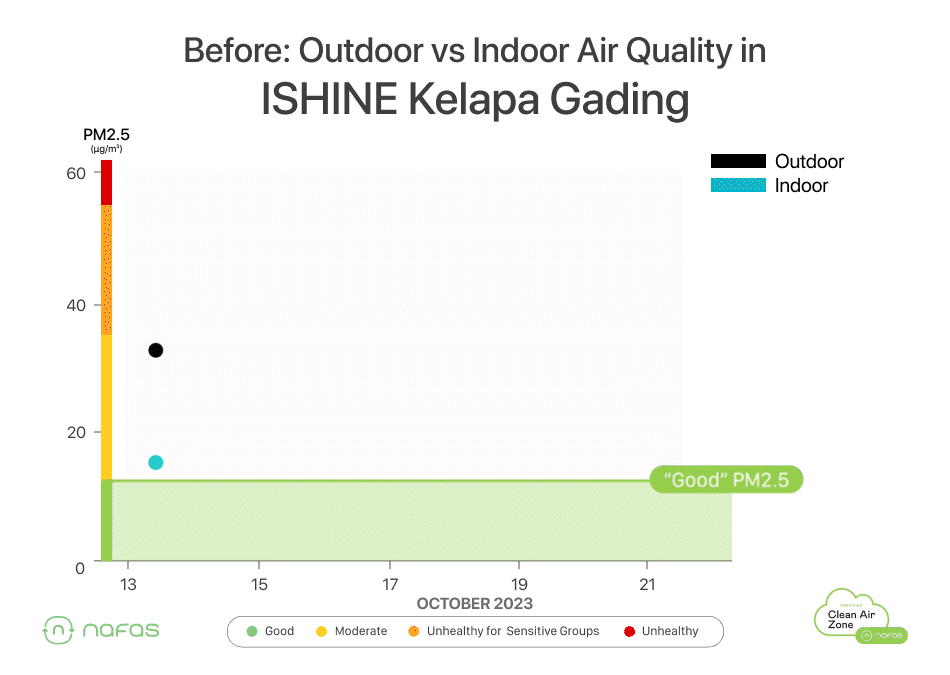
As evident from our findings, the indoor PM2.5 levels peaked at 43 µg/m³, nearly triple the recommended maximum of 15 µg/m³ as advised in scientific research. The building's existing infrastructure managed to filter out only a minimal amount of external pollution. This situation underscores the necessity for implementing additional filtration measures at IShine Kelapa Gading to ensure a healthier indoor environment.
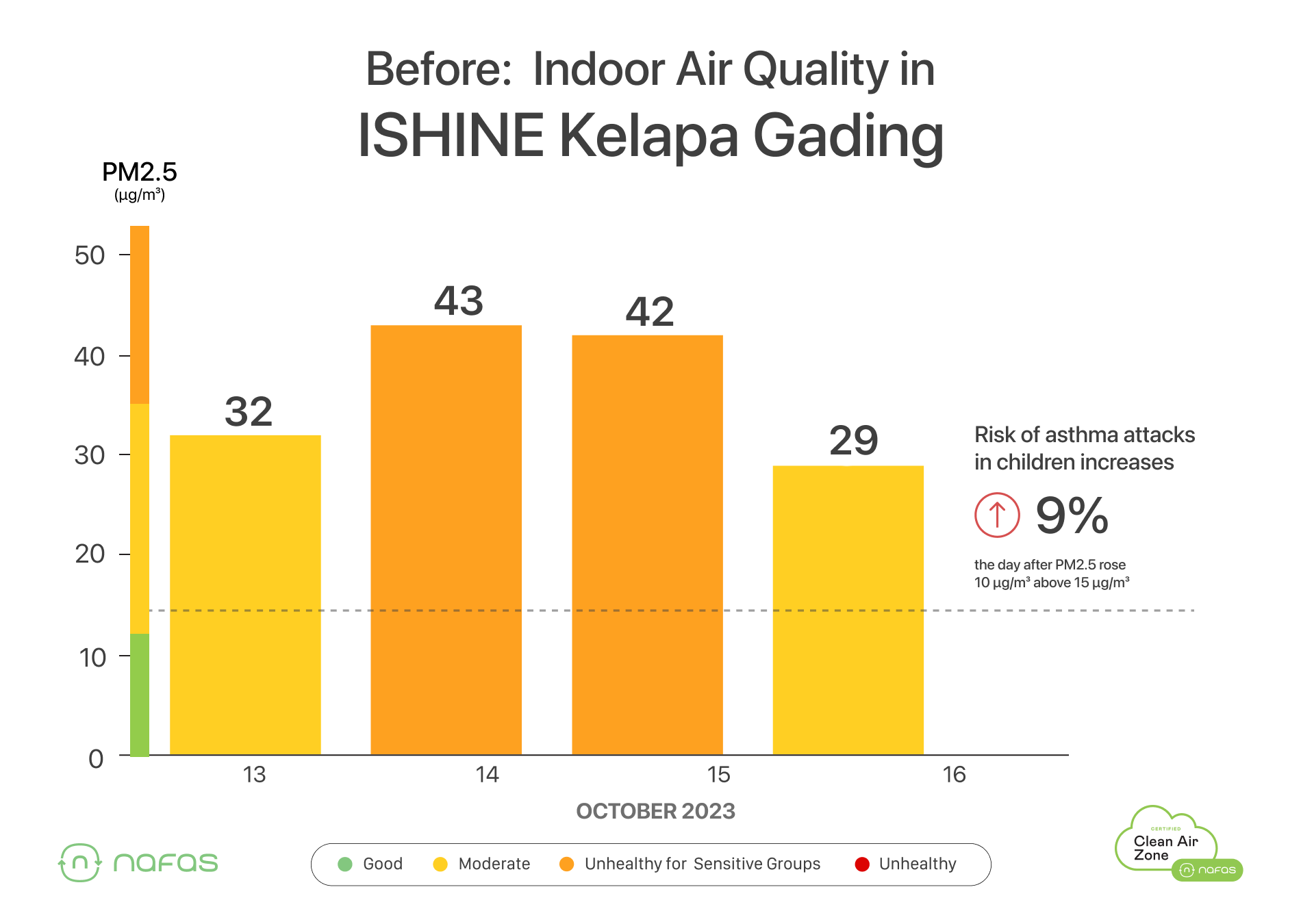
Throughout the diagnostic period, Nafas transformed the collected data into an AirScore. This AirScore provides a rating reflecting the healthiness of the indoor air quality at the location.
The concluding AirScore for this school was a 'D', indicating that the indoor air quality was unsafe and required significant measures for improvement!

The Solution: Turning IShine Kelapa Gading Into a Clean Air Zone
To address the challenge of poor indoor air quality in pollution-prone cities such as Jakarta, Nafas has innovated the Clean Air Zones system. This comprehensive ecosystem is designed to sustain healthy indoor air quality throughout operational hours. It achieves this through an integrated strategy encompassing precise air quality measurement, effective purification techniques, robust certification standards, and engaging, data-driven programs for employees.
Our approach is both accessible and practical, featuring a no initial investment model complemented by a subscription-based service. This makes enhancing office air quality straightforward and achievable.
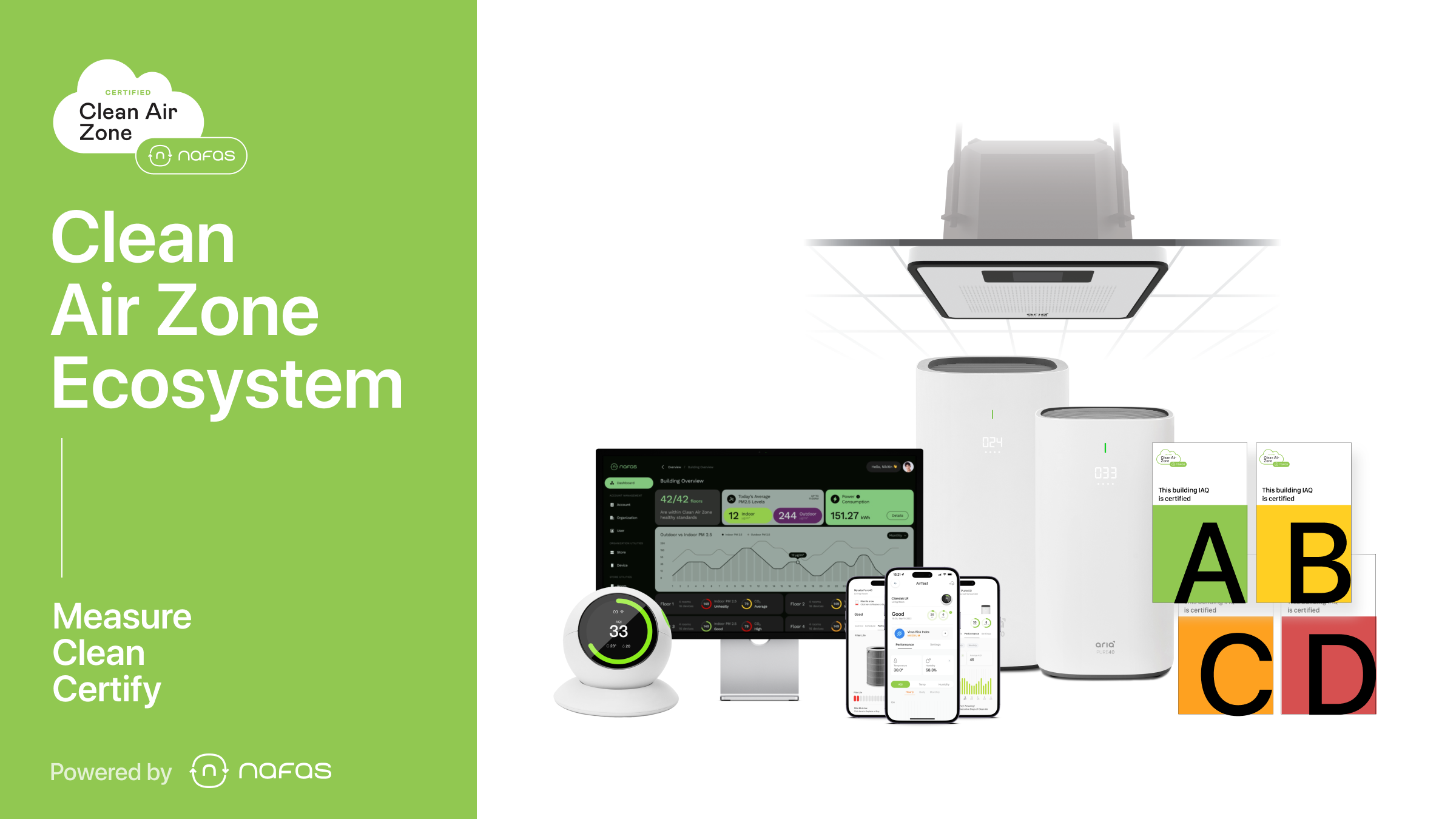
Furthermore, the system functions autonomously, eliminating the requirement for extra management effort or any initial financial investment!
The Result
In October 2023, IShine Kelapa Gading underwent a transformation into a Clean Air Zone. This transition facilitated a collaborative observation by Nafas and the school's management, highlighting a significant improvement in indoor air quality.
Throughout school hours, the Clean Air Zone consistently keeps the indoor air quality at healthy levels, significantly lower than the outdoor average. This ensures that the children enjoy a safe and healthy environment indoors.

The Clean Air Zones at IShine Kelapa Gading successfully maintain the air quality inside all classrooms at a healthy level during school hours.
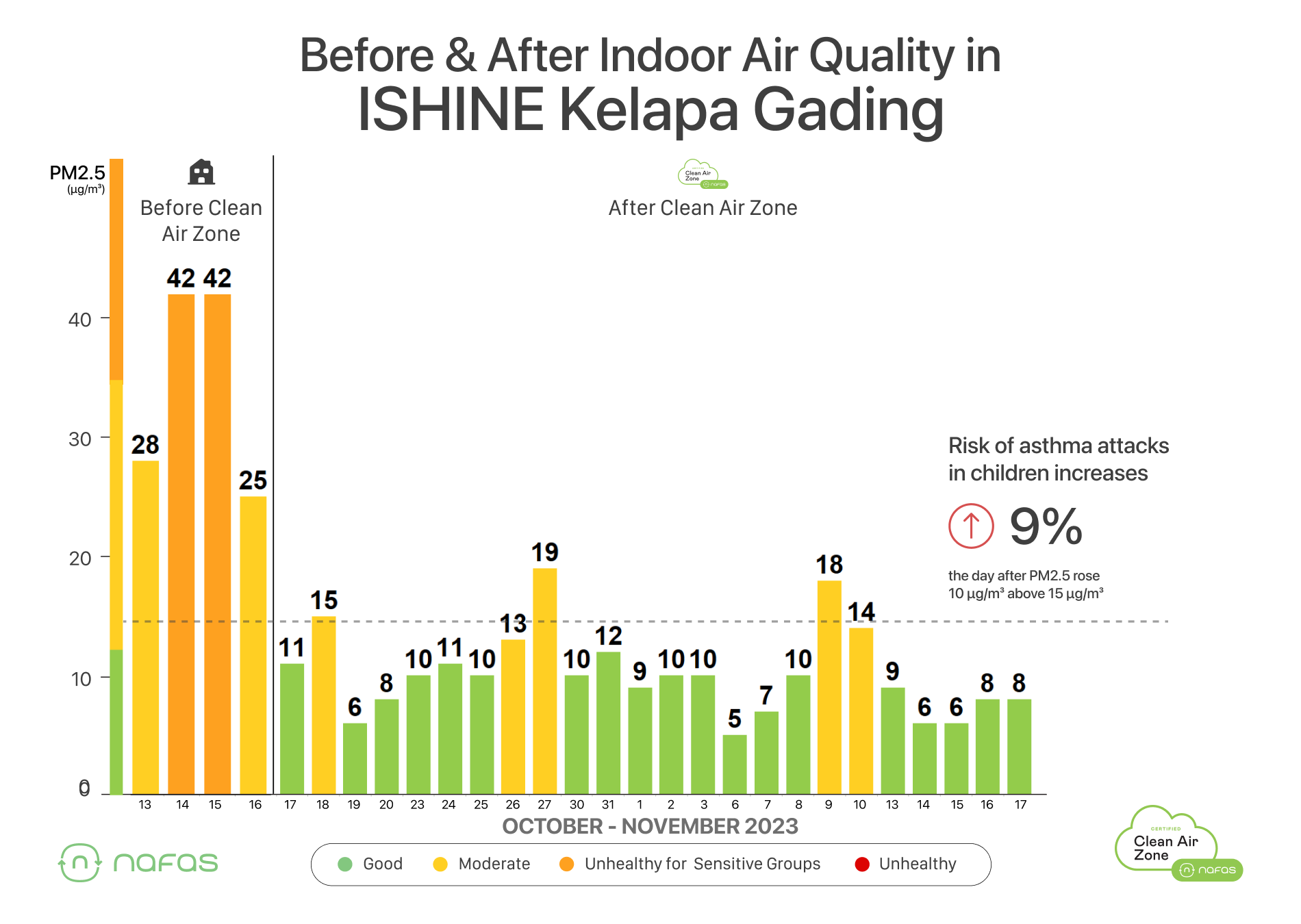
When contrasting the outdoor air quality with the indoor conditions, the remarkable improvement becomes strikingly evident.
By adopting the Clean Air Zones initiative, IShine Kelapa Gading has demonstrated a firm commitment to providing a safe and healthy learning environment. This proactive approach to reducing students' exposure to air pollution has notably elevated their AirScore from 'D' to 'A' across all campuses.
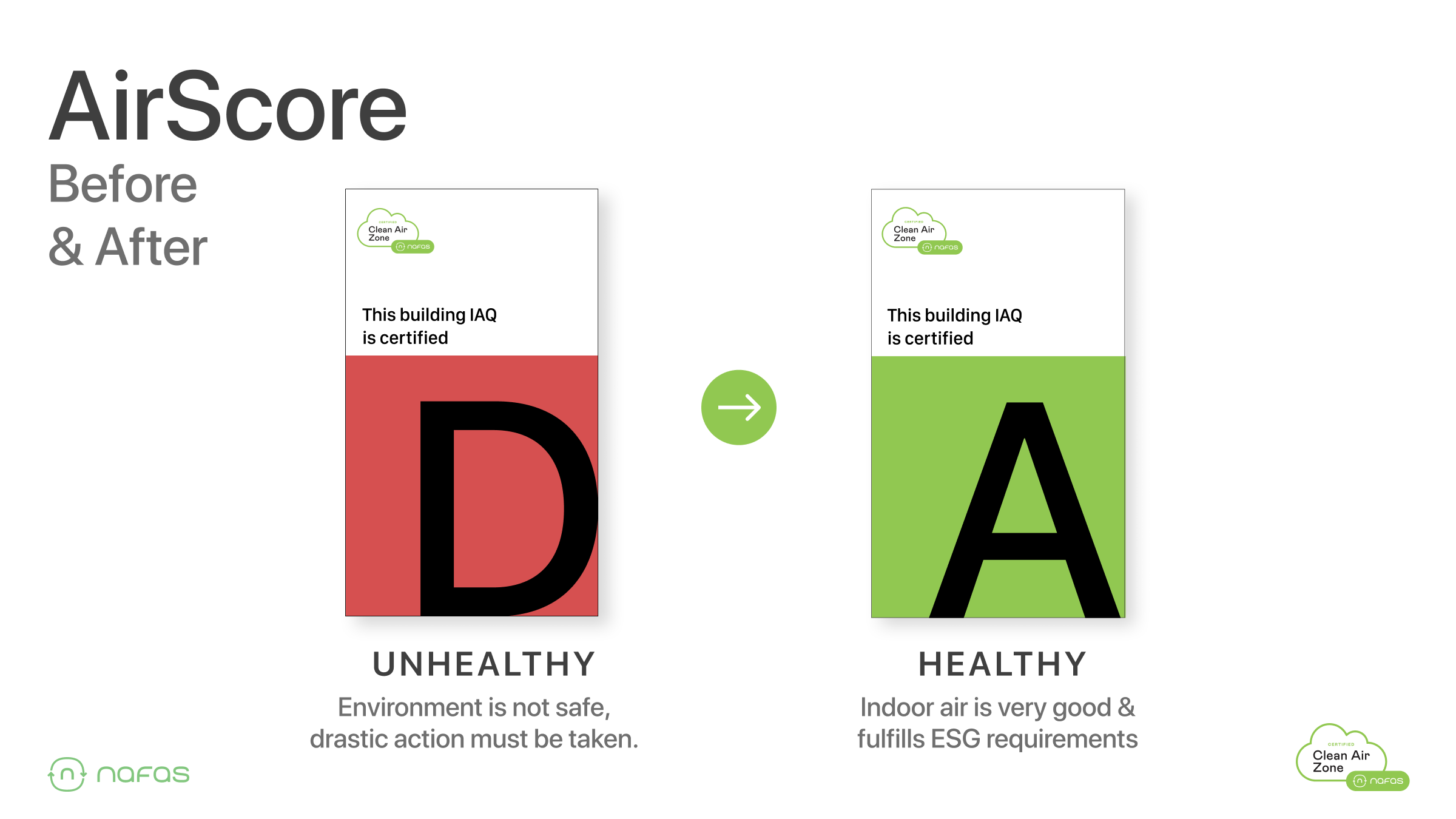
The Monthly Report
Clean Air Zones are grounded in data-driven insights, with each location receiving reports monthly. These comprehensive reports spotlight the air quality conditions upheld by the Clean Air Zones. They also offer valuable data that schools can share with parents, teachers, staff, and shareholders, ensuring transparency and informed engagement. Below is a sample of the kind of report schools receive!

Becoming a Clean Air Zone is simple!
Interested in ensuring your school's air quality is top-notch? Feel free to reach out to us at [email protected], or click the link below to register for a complimentary AirScore assessment.
Let's work together to make clean air a standard in our schools!
